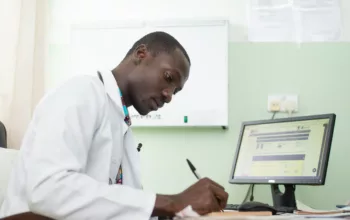4th African Regulatory Conference: Promising Outcome
The 4th African Regulatory Conference generated unprecedented consensus on a shared vision to bring about genuine regulatory harmonization in Africa. Discussions built on the strong foundations laid by African Medicines Regulatory Harmonization (AMRH) that will ultimately shape a new regulatory landscape for Africa. This is a giant leap from when the first African Regulatory Conference took place in 2008 as no meaningful dialogue was yet in place among the different stakeholders. Dakshina Reddy and Paul Dearden, members of IFPMA’s Africa Regulatory Network (ARN), share some of the insights gained.
With the growing need for medicines every day, regulatory systems in Africa must improve if patients want to receive their medicines in a timely manner. With limited resources, it is essential that nations work together, share efforts, and look for efficient ways to assess the quality, safety, and efficacy of medicines. Referencing the African saying, Mr Ibrahima Wone, Secretary General of the Ministry of Health and Social Action of Senegal, opened the event with, “If you want to go fast, go alone; if you want to go far, go together.” This spirit was increasingly present throughout the conference, with a huge emphasis on collaboration and work-sharing, not only amidst regulators but also between industry, national regulatory authorities, including the World Health Organization (WHO).
It was clear from the outset that in an environment where many counterfeit and poor qu ality medicines exist, a strong need and commitment for trust was emphasized. By working together and supporting the capacity development of regulators, appropriate levels of trust can be built and national regulatory authorities will be equipped to make decisions in the interest of the health of their communities.
ality medicines exist, a strong need and commitment for trust was emphasized. By working together and supporting the capacity development of regulators, appropriate levels of trust can be built and national regulatory authorities will be equipped to make decisions in the interest of the health of their communities.
During the first sessions of the meeting, Dr Margareth Ndomondo-Sigonda, from the New Partnership for Africa’s Development (NEPAD), which is the technical arm of the African Union coordinating the African Medicines Regulatory Harmonization (AMRH) project, explained that the aim for AMRH is to have one single agency for Africa through a step-wise approach, i.e. 54 national agencies harmonizing to five regions. In addition to regulatory harmonization of registration procedures, NEPAD wishes to pursue harmonization of clinical trial requirements, particularly as Africa is becoming increasingly involved as a location for clinical studies.
Dr John Patrick Mwesigye, East African Community (EAC), representing Tanzania, Kenya, Uganda, Rwanda, and Burundi pointed out that “Harmonization is underway in our region since November 2014; although launched with interest in selective products, the EAC is keen to invite other submissions and committed to further work on their guidelines, including variations procedures which affect the product’s availability during its lifecycle. The first two EAC approvals were achieved using a prequalification-type review with WHO support. The following five approvals were achieved by joint review by EAC agencies.”
Dr Luther Gwaza, from the Zimbabwe regulatory agency explained that the ZaZiBoNa initiative (short for Zambia, Zimbabwe, Botswana, and Namibia) has taken a pragmatic approach. They demonstrated the effectiveness of regulators taking a bold attitude towards changing the ‘business as usual’ approach and wanting to make progress and achieve real positive change. There is a strong drive from this group to ensure medicines are equally available in participating countries. Regarding the Southern African Development Community (SADC) region, there remains a question as to how much progress is ongoing, and this needs further consideration.
Professor Amadou Dieye, Director of the Pharmacy and Medicine Directorate of the Senegal Ministry of Health together with Dr Corneille Traoré, Director of Health, Social Protection and Mutual Insurance of the Commission of the West African Economic and Monetary Union (WAEMU)—an organization that supports West African harmonization for Benin, Burkina Faso, Cote d’Ivoire, Guinea Bissau, Mali, Niger, Senegal, and Togo—gave updates from their region which has least progressed in its discussions. They provided a strong commitment to the new work underway and the importance of seeking industry collaboration in drafting regulatory legislation and guidelines. In addition, WAEMU representatives were highlighting their local challenges – and stressed the political will required to implement these agreements in national law. Dr Traoré was passionate in his presentation stressing that “For regulatory agencies, working together is no longer an option – it is the only way forward.”
Throughout the two-day conference, there was lively discussion and debate around regulatory systems and pathways – important considerations when developing new regional frameworks. An interesting area of discussion is around options for achieving regulatory ‘review’ i.e. how agencies can reach the approval decision. Examples of other agency work-sharing e.g. EMA systems were highlighted followed by discussion surrounding the reliance on one’s own or others expert reviews, and the reliance on reference countries e.g. the use of Certificate of Pharmaceutical Products (CPPs), etc. Participants also questioned the value of sample analysis during registration review and WHO commented that “such work by agencies rarely adds value,” highlighting that this resource and effort could be re-prioritized elsewhere.
Building Regulatory Capacity for Success
The overarching message from the conference was that training and capacity building are key drivers for change in this area – a number of options already exist and stakeholders like the WHO, the World Bank Group play a key role, as do NEPAD and the Regional Centres of Regulatory Excellence (RCORES). Still, there is a significant amount of capacity development needed. Industry acknowledged it must consider how to further engage in this area, including RCOREs.
There was a special workshop on this topic and it concluded that capacity building for harmonization needs to be across all levels, not just one aspect of registration. There needs to be capacity building in many areas: 1) across the entire life cycle of a product (eg. clinical trials, pharmacovigilance, variations etc.); 2) funding is essential yet funding only the project itself will not help; 3) career progression for regulators is important (eg. courses, training, regional opportunities etc.); and 4) continuous professional development is essential to develop further competencies. In essence, there needs to be an approach towards educational harmonization too.
To conclude, the Conference represents a major milestone as there are now real harmonization efforts underway and agreement that industry is considered an important contributor. The Conference allowed national regulatory authorities to share examples of real progress and intentions. As trust develops between stakeholders it is clear industry is expected to play a growing role in AMRH. To do so it will need to re-focus efforts towards the specific regional activities: prioritize where we can input, establish mechanisms to engage and contribute to harmonization and capacity building activities.
Author





